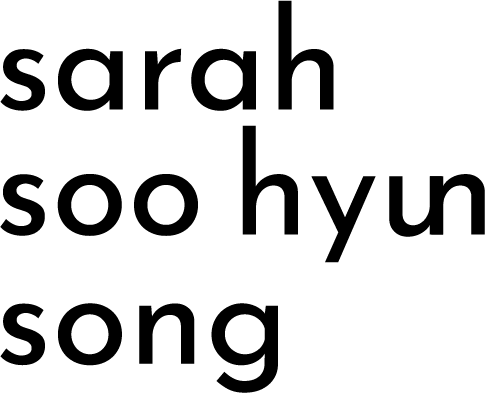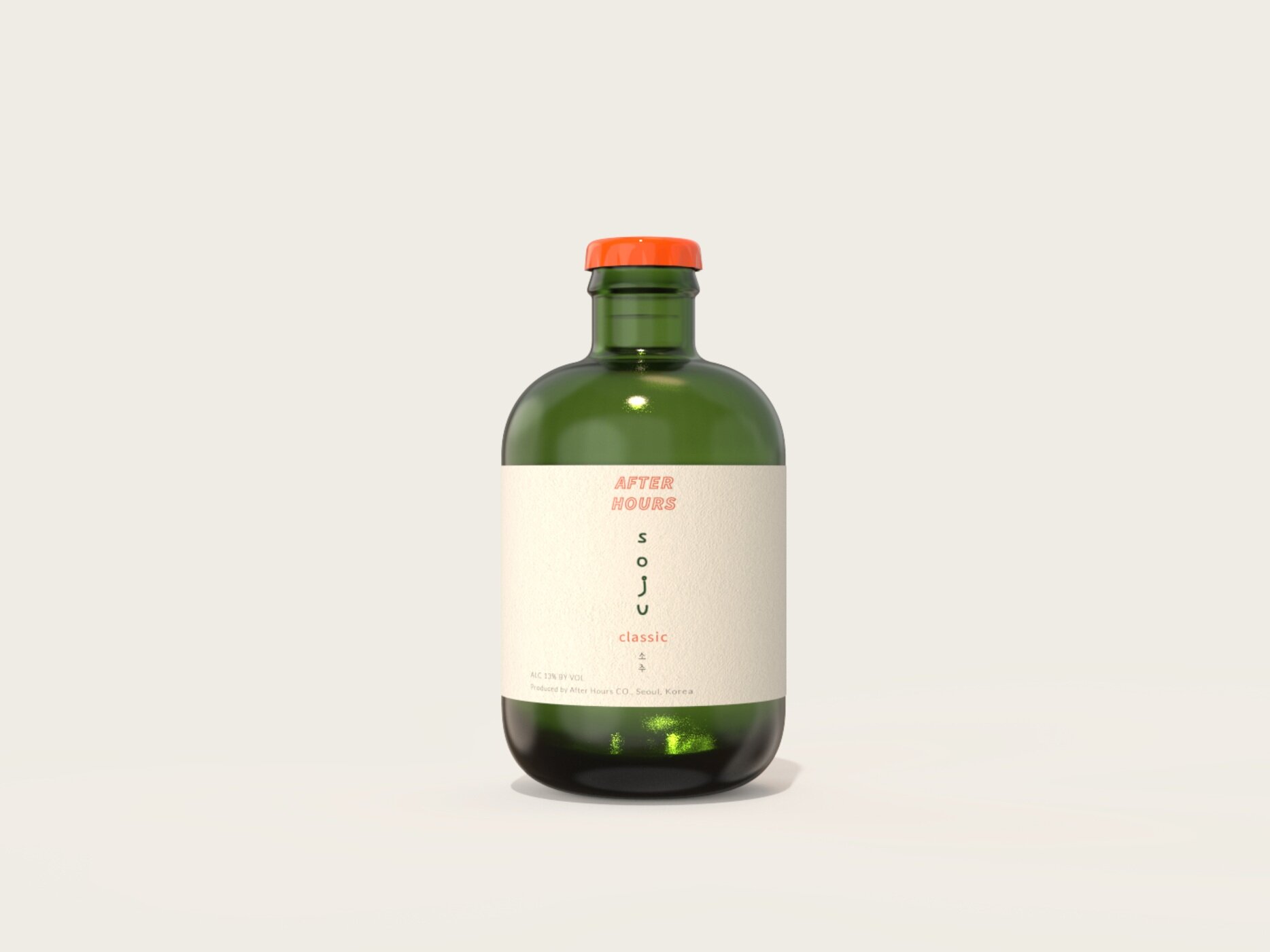
After Hours Soju
Re-packaging the iconic Korean alcoholic beverage, soju.
A 4-week beverage packaging project re-evaluating the appeal current soju packaging.
Spring 2021

Soju History
Soju did not originate in South Korea.
Soju was brought in by Mongol invaders in the early 13th century during the Goryeo Dynasty. Soju was spread through war, as soju was originally made in Arabia known as “araq” and passed through the Mongols before arriving in Korea.

Traditional Soju’s main ingredients are rice and wheat and goes through a distillation process and gives its high alcoholic content. Overtime, the alcohol content has been reduced from 25% to 17% since people are preferring a casual drinking experience.
Soju Popularity
Soju is the world’s most popular liquor, it’s the No. 1-selling liquor by volume, and sales have only been growing in recent years.

The Soju Drinking Experience
How do most people drink their soju?
Soju is typically served in shot glasses.
Soju is often consumed in high volume.

An Iconic Social Drink
Soju is most often drank with the company of others. People enjoy drinking soju during social gatherings such as after work meetings and college parties. Korean culture encourages people to enjoy the stress relieving aspect of alcohol.

Hweshik- Post-workday meetings
In Korean working environments, workers hold meetings where they drink alcohol with their superiors. Gradually, people are recognizing that these meetings lead to unhealthy work culture.

College Drinking Parties
The legal drink age in South Korea is 20-years-old which is also the age that students are when entering college. College essentially is a time for students to enjoy their youth and drink a lot of soju with their friends. Similarly, in America, students enjoy drinking heavy amounts of alcohol at parties.

Yet…
Brands continue to use old style packaging.
01 Calligraphic text
02 Water color art
03 The same generic bottle form
Shifting the target user into college students
Designing packaging that appeals more to young adults who enjoy drinking soju.

Free
Memorable
Elevated
Key Words
Fresh
Young
Classic

Creative Direction: Streetwear

Positive and Negative Spacing
While approaching the graphical elements for the design, I wanted to include layering typography. The layering and use of mixed fonts is a style often used in Korean street fashion and advertising.
Color Inspiration: Iconic Green
Green is the raw color of glass used for most soju bottles. All brands use that same green color to make it easier to recycle the bottles. Soju makers can easily recycle soju bottles without excessive processing. Over time, green bottles have become associated with soju.
Color Inspiration: New Retro
Bold and vivid colors invoke a sense of nostalgia. The rich tones complement the green tone of the bottle.

Brand Development

Final logotype:

After Hours Soju Bottles
The After Hours soju packaging retains features that are classic to the modern soju bottles. The wide form and minimal graphics add simplicity to the design. The rounded silhouette of the bottle creates a visual comfort that facilitates the relief that people feel while drinking. The glass tone remains green so that the bottle is recognizable as soju. “Soju” is written in a handwritten style to pay homage to the classic calligraphy and art on current labels.
Color Accent
The cap of the bottle is a vivid orange hue to contrast the green bottle. The juxtaposition of bright color on its overall simple design creates more visual interest and relates with streetwear trends.

Manufacturing Method
Pressure Sensitive Paper Label
Neenah Classic Label Stock
Solar White
Felt Paper
Offset Litho Printed

Opportunity to expand into a line of drinks with a lower alcohol percentage.
After Hours Light
Creating a more casual drinking experience through packaging in cans. With a lower alcohol percentage and fruit flavoring, the After Hours Light line is enjoyable even when alone.


Layering Graphical Elements
The fruit flavoring naturally brightens up the mood of the soju. There was more opportunity to add playfulness and pops of color to the cans. Taking inspiration from the streetwear design boards, typography and shapes are layered creating a dynamic impact with positive and negative forms. Each flavor has its own bold color and illustration to match the fruit.
Shrink Sleeve Labels on Slim Aluminum Cans
Instead of standard cans, the After Hours light soju line uses 250 ML thin cans. The slim silhouette of the cans matches the light and bold image of the fruit flavor drinks.

Full After Hours Collection
Enjoy a refreshing drink after hours.

































